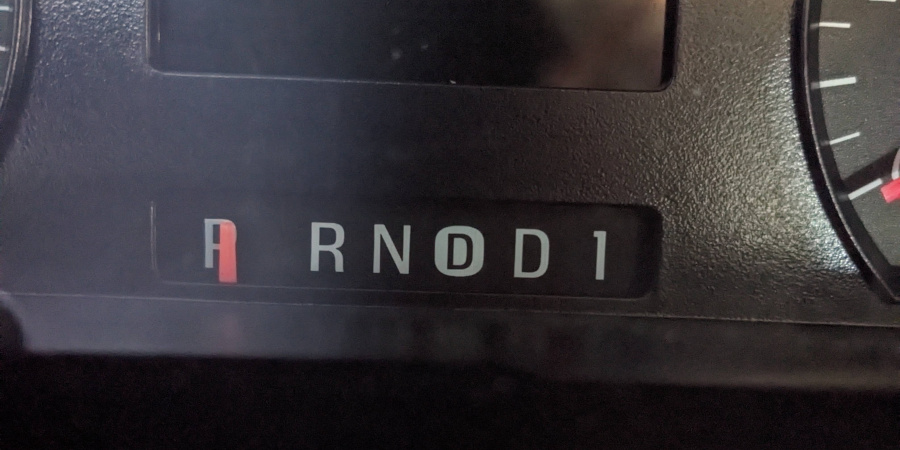On many cars you may notice that the gear shifter has two Ds. You know what park, reverse, & neutral are. You hopefully also know that the numbers are for explicit downshifting, but why does drive appear twice?
The first D with a white background is really meant to be a D inside of an O for "overdrive." This enables all of the gears in your transmission and allows you to go into the highest gear, which is sometimes called "overdrive," to optimize your MPG on the highway. The lower, plain D essentially is downshifting as well, as it prevents your transmission from shifting into the highest, overdrive gear.
When Should I Use Which?
For those who aren't gear heads, you may not intuitively grasp the benefits of each.
If you are at highway speeds (like over 45 mph) for a significant period of time, you definitely want to use overdrive, as this will greatly improve your mileage. Every higher gear it can shift into allows it to spin its wheels more times for fewer engine rotations, allowing more fuel to be used actually moving you forward versus just spinning the engine with torque you don't need. Overdrive is so named because its the only gear that spins the wheel more than once per time the engine spins, so it increases their RPM over the engine's.
You only ever really want to use the non-overdrive drive when your vehicle is struggling. If you are pulling a trailer or going up steep hills at high speeds, your engine may try to shift into overdrive, realize it cannot power that, shift back, and then try again. Modern cars do their best to avoid such miscalculations, but if you are going up and down hills it can become able to upshift and then not be able to handle it back and forth frequently. It is something you literally have to play by ear and listen whether your vehicle is shifting back and forth often. If you notice such, you may wish to use the plain D to maximize your transmission's lifespan by avoiding unnecessary high-speed shifts. The benefit in fuel savings gained by briefly shifting into overdrive in such situations is likely to be outweighed by the added wear on your transmission, causing an early very expensive repair.
If you don't want to think about it and just want to stick with one, always use the overdrive mode, the first D with a white background. While you may get some avoidable wear on your tranny, it is designed to be used and the gas savings will far make up for it. Especially if you avoid towing too-heavy loads with vehicles not designed for it, you shouldn't have to worry about using anything but the first, overdrive option.
